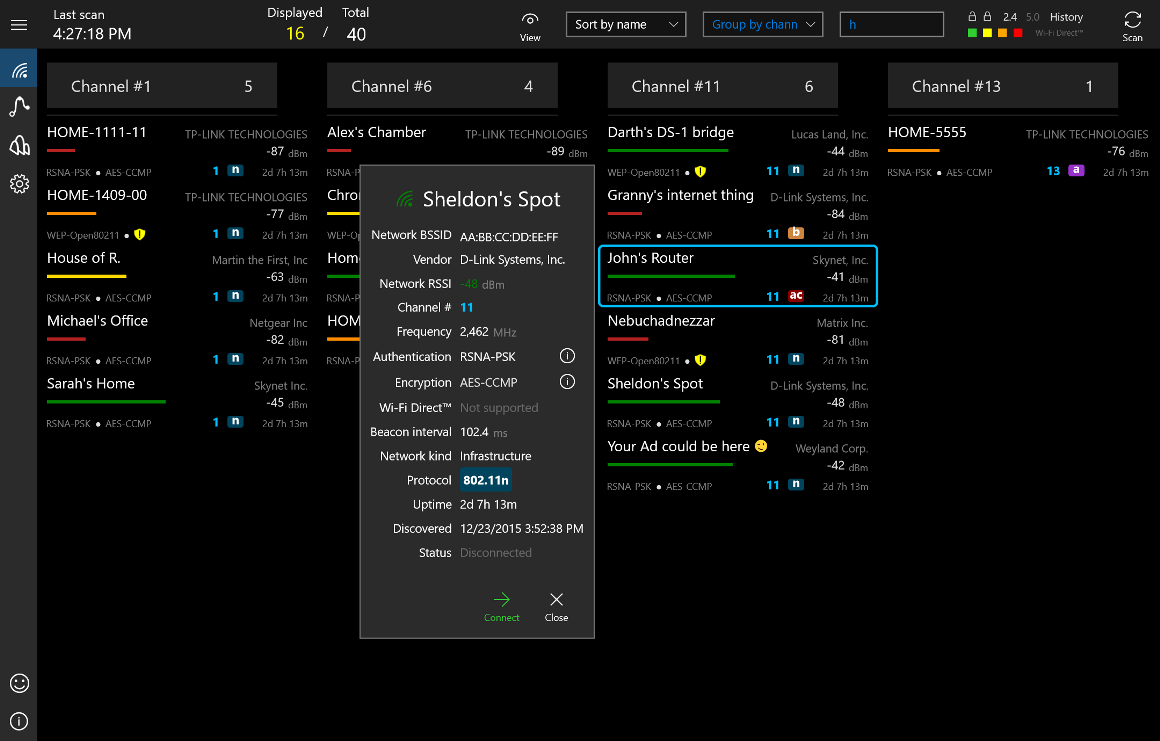
However, a neighbour maybe running a network on the same channel, causing interference issues. For both 2.4GHz and 5GHz networks, the trick is to set your router to use a channel different (where possible) to other wireless networks within range and one that doesn't overlap. Picking the right channel isn't just about making the right decision based on technical data, but picking the right channel based on the networks around you, then.įortunately, this problem has been fixed with 5GHz networks, which has more channels, none of which overlaps. It's not always that simple, though, as plenty of people don't follow this simple rule for example, you may be surrounded by people using Channel 2, which overlaps both Channel 1 and 6. Typically, people suggest using channels 1, 6 and 11, as these are these channels work everywhere in the world (12 and 13 are restricted in some places, although not the UK) and don't overlap. All of the channels coloured the same colour don't overlap. The illustration below shows you how the channels stack up. Unfortunately, most of the 2.4GHz channels overlap, causing interference: channel 2 uses 2,417MHz to 2,437MHz, for example. For example, channel 1 for 2.4GHz networks uses the 20MHz slice between 2,412MHz and 2,432MHz.

Choosing the right Wi-Fi channelĪlthough your router will run on a frequency band, such as 2.4GHz, underneath it's actually only using a 20MHz slice of the frequency, called a channel. Finally, try repositioning the router and seeing if that improves the signal, and you may be surprised at the results. If it's wall-mounted on a brick wall, try taking it off. Take it off a metal shelf, if positioned on one. If you put your router in the wrong place, you may be artificially hampering its performance.įor the sake of testing, put your router close to your master phone socket to eliminate any issue of wiring. Reposition routerĪs we mentioned in the intro, positioning can be one of the biggest problems with Wi-Fi speeds. If you're still having interference or range problems, you may need some new hardware, but we'll cover all of that in the next section. We'll show you how to set up 2.4GHz and 5GHz networks properly.

By reconfiguring your router and changing some of its more simple settings, you may find that your Wi-Fi troubles go away. You might not need to buy a new router if you can fix the interference problems you're suffering.

How to detect and fix Wi-Fi interference Fixing interference


 0 kommentar(er)
0 kommentar(er)
